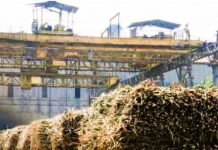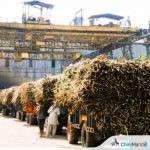IS THERE A TURNAROUND IN SIGHT OR IS IT A FALSE ALARM?
The sugar futures market in NY closed out Friday with the contract maturing in October/2024 trading at 18.40 cents per pound, a 30-point high against last week’s close, representing 6.60 dollars per ton. The other contracts maturing until March/206 also closed out within positive territory between 3 and 31 points (between one and seven dollars per ton).
Risking getting ahead of the facts, but already risking taking a shot at them, it seems we are starting to witness a turnaround on the sugar market in NY. After being strongly pressured by exchange rate fluctuations well above the average (who doesn’t remember the dollar flirting with R$ 5.9000?) and seeing Brazil’s huge flow of sugar export, which dumped almost 38 million tons on the international market in just twelve months, the scenario has gotten complicated. And, on top of that, the speculative funds “giving a helping hand” with the drop, without worrying too much about the fundamentals, and the frenetic rhythm of the crushing influencing the decisions, it’s no wonder the futures market didn’t have a choice but to drop. After all, how can one ignore such an evident bearish bias?
However, the situation of the sugarcane fields is a lot more serious than it was thought. The harrowing scenes of the wildfires that affected several mills, widely shared over the social media, give an idea of how the problem is spreading, even when it seems to be something isolated. The consensus that the crushing in the Center-South would be around 605 million tons has already gone down the drain. After sharpening the pencils and redoing the math, this number is quickly heading toward the 600 million tons, with a downward bias. And, honestly, I wouldn’t be surprised if we ended the year with 590 million tons.
The impact of the wildfires on the sugarcane fields still needs to be better assessed, but it’s obvious that the burned sugarcane tends to lose quality, especially when it comes to the sucrose content, which is fundamental for the sugar and ethanol production. The burned sugarcane needs to be processed quickly to minimize the sugar losses; even so, the efficiency of the process (read crystallization) can be jeopardized. There is also the increase in residues, such as ashes and burned material, which increase the impurities of the extracted juice, demanding more treatment during the production.
Could the 2025/2026 crop in the Center-South also be jeopardized? The fire can damage the roots and the sugarcane buds, which can jeopardize the replanting and the growth of the next crops, reducing future productivity of the sugarcane field. To me, this is a point that needs to be carefully watched. I will repeat what I said here on the last comment, “If the 2025/2026 crop suffers a water deficit stemming from this current crop, get ready for higher prices – way higher.”
Insensitive to all this – and it couldn’t be any different given the nature of their business – the speculative funds shrug and – according to the COT (Commitment of Trades) report, based on last Tuesday’s position, were short by 70,960 lots.
Maybe they don’t even realize it, but the position of the speculative funds is more vulnerable than it seems to be. The combination of the worrisome water situation in the fields with the increasing probability of a “sudden death” can be the trigger for a price surge. And as if that wasn’t enough, we will still face a long off-season period. As we know, a long off-season period demands adjustments to the agricultural planning, such as the advancement or the delay of the planting of the next crop. And that can have an impact on the future productivity, depending on the climate conditions and the health of the soil. That is, it’s a true ripple effect.
Now, let’s imagine a hypothetical scenario: supposing that India doesn’t return to the international market before at least April next year, that the “sudden death” occurs in October, and that the 2025/2026 crop is jeopardized by already mentioned factors, what would prices be like at the start of the year? Well, NY will have to trade at a value that makes India rethink its export policies, offering better prices than the ones practiced on the internal market over there. It’s like trying to convince someone to move out of their house by offering something better than the sofa and the TV – it won’t be easy, but it’s possible!
If we have a combination of factors – apparently with little probability today – such as the oil price above 80 dollars per barrel and the grains recovering from the drop (soy accumulates a loss of 23% and corn 25% in the year), maybe those 30 cents per pound long dreamed by the market over the last quarter last year will come true. Take it easy – this is just guesswork.
To read the previous episodes of World Sugar Market – Weekly Comment, click here
To get in touch with Mr. Arnaldo, write on arnaldo@archerconsulting.com.br
To read more about the news about the sugar industry, continue reading Chinimandi.com.












